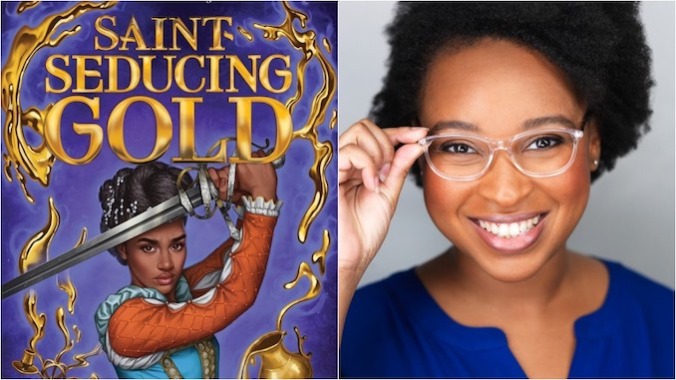The Fiend at My Elbow: The Stories That Fuel the Horror Elements In Saint-Seducing Gold and the Forge & Fracture Saga
Photo: Jessica Osber Photography
A notification pings on my phone, the tiny number one standing stark against the app’s icon. A friend is in the middle of reading my debut novel, That Self-Same Metal, and had to pause to check in with me. I open it and burst out laughing. The comment is a joke, compliment, and call-out rolled into one.
“These interludes. You okay, sis?”
The interludes she mentions are isolated chapters that deviate from the main plot of the novel. A man pulled to pieces and devoured by a group of beautiful women, a young thief snatched from the streets by a cloud of nightmares, a group of gamblers torn to shreds by a black dog. These interludes flow throughout the trilogy and give us tiny glimpses into the world beyond the view of Joan, the teen protagonist of the Forge & Fracture Saga. Although, even she finds herself in the middle of the bloodshed which, while distinctly PG-13, gets quite gruesome. Beheadings and vivisections may seem out of place in a young adult historical fantasy set in Shakespearean London but for me, they’ve never felt more at home than amongst this world of faerie stories and sonnets.
Fairytales live alongside the darkness. Most were born from words woven by the fire as a night purer in pitch than most of us could imagine pressed in on all sides. Gruesome details served the practical purpose of establishing proper behaviors—don’t go into the woods at night, be kind to strangers, don’t tell lies, and beware of strangers at the door. The creepy nature of fairy stories now finds itself overshadowed by the shiny corporate gloss of Happily Ever After and endless streams of sparkling merchandise selling a G-rated fantasy. Those shadowy bits still lurk beneath the surface, kept in sight by those who refuse to forget and waiting for those who seek to rediscover.
I was never a true fan of the horror genre, despite my grandfather’s best efforts. A Black World War II veteran, he hid the trauma of his service in tales of fighting vampires, demons, and werewolves in Germany and by watching scary movies constantly. I’d spend most of the time hidden under the covers or peeking down from the top of the stairs, nervously daring to glimpse the living room TV between supernatural happenings in the family favorite Pet Sematary. Perhaps because the stories that lived in my head and my books were too real. Not only had I met a ghost figure wandering our house, my grandfather’s war stories felt too vivid to be fabricated. My head was already full of horror, spinning its own tales out of the material fed to it. I didn’t need someone else to scare me, I could do it thoroughly enough on my own. Blood and violent deaths crept into even my early attempts at storytelling, sitting comfortably alongside princess adventures, and that nightmare fuel would soon get a historical boost.
-

-

-

-

-

-

-

-

-

-

-

-

-

-

-

-

-

-

-

-

-

-

-

-

-

-

-

-

-

-

-

-

-

-

-

-

-

-

-

-








































